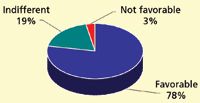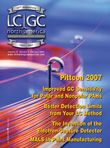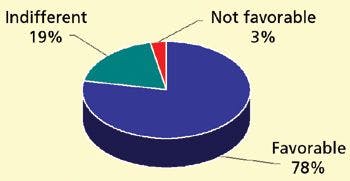High Performance Liquid Chromatography
HPLC is among the most dynamic markets in the laboratory analytical and life science instrument industry. The market can be segmented into six different categories, which include conventional HPLC, capillary/nano LC, fast LC, preparative HPLC, amino acid analyzers, and gel permeation chromatography systems. Conventional HPLC systems, which account for the majority of the market, are standard HPLC instruments with typical flow rates between 1–10 mL/min. However, other HPLC systems designed for specific applications and that remedy some of the shortcomings of conventional LC systems, are becoming more significant in the market.
HPLC is among the most dynamic markets in the laboratory analytical and life science instrument industry. The market can be segmented into six different categories, which include conventional HPLC, capillary/nano LC, fast LC, preparative HPLC, amino acid analyzers, and gel permeation chromatography systems. Conventional HPLC systems, which account for the majority of the market, are standard HPLC instruments with typical flow rates between 1–10 mL/min. However, other HPLC systems designed for specific applications and that remedy some of the shortcomings of conventional LC systems, are becoming more significant in the market.
Fast LC systems, for example, have been highly publicized during the last few years. In a recent survey conducted by SDi, users were asked to provide their opinions about this technology. Most users realized the advantages of utilizing sub-2 μm particle columns to yield higher resolution and increased sensitivity.

Fast LC options.
Most users favored the technology, but also expressed concerns about fast LC. Price was a significant issue as users noted that fast LC systems might be too high to fit into their lab's operation budget. In addition, many of the survey participants were concerned about the overall cost of system ownership and the life expectancy of columns. Furthermore, its ultra performance capabilities might not be required for their current applications. Despite these apparent concerns, users also indicated that their lab expected to purchase one or more fast LC systems during the upcoming year.
The foregoing data was extracted and adapted from SDi's High Performance Liquid Chromatography: New Opportunities in a Reinvigorated Market report. For more information, contact Glenn Cudiamat, VP of Research Services, Strategic Directions International, Inc., 6242 Westchester Parkway, Suite 100, Los Angeles, CA 90045, tel. (310) 641-4982, fax (310) 641-8851, e-mail: cudiamat@strategic-directions.com Web site: www.strategic-directions.com.

Investigating 3D-Printable Stationary Phases in Liquid Chromatography
May 7th 20253D printing technology has potential in chromatography, but a major challenge is developing materials with both high porosity and robust mechanical properties. Recently, scientists compared the separation performances of eight different 3D printable stationary phases.
Characterizing Polyamides Using Reversed-Phase Liquid Chromatography
May 5th 2025Polyamides can be difficult to characterize, despite their use in various aspects of everyday life. Vrije Universiteit Amsterdam researchers hoped to address this using a reversed-phase liquid chromatography (RPLC)-based approach.
New Method Explored for the Detection of CECs in Crops Irrigated with Contaminated Water
April 30th 2025This new study presents a validated QuEChERS–LC-MS/MS method for detecting eight persistent, mobile, and toxic substances in escarole, tomatoes, and tomato leaves irrigated with contaminated water.
University of Tasmania Researchers Explore Haloacetic Acid Determiniation in Water with capLC–MS
April 29th 2025Haloacetic acid detection has become important when analyzing drinking and swimming pool water. University of Tasmania researchers have begun applying capillary liquid chromatography as a means of detecting these substances.

.png&w=3840&q=75)

.png&w=3840&q=75)



.png&w=3840&q=75)



.png&w=3840&q=75)













